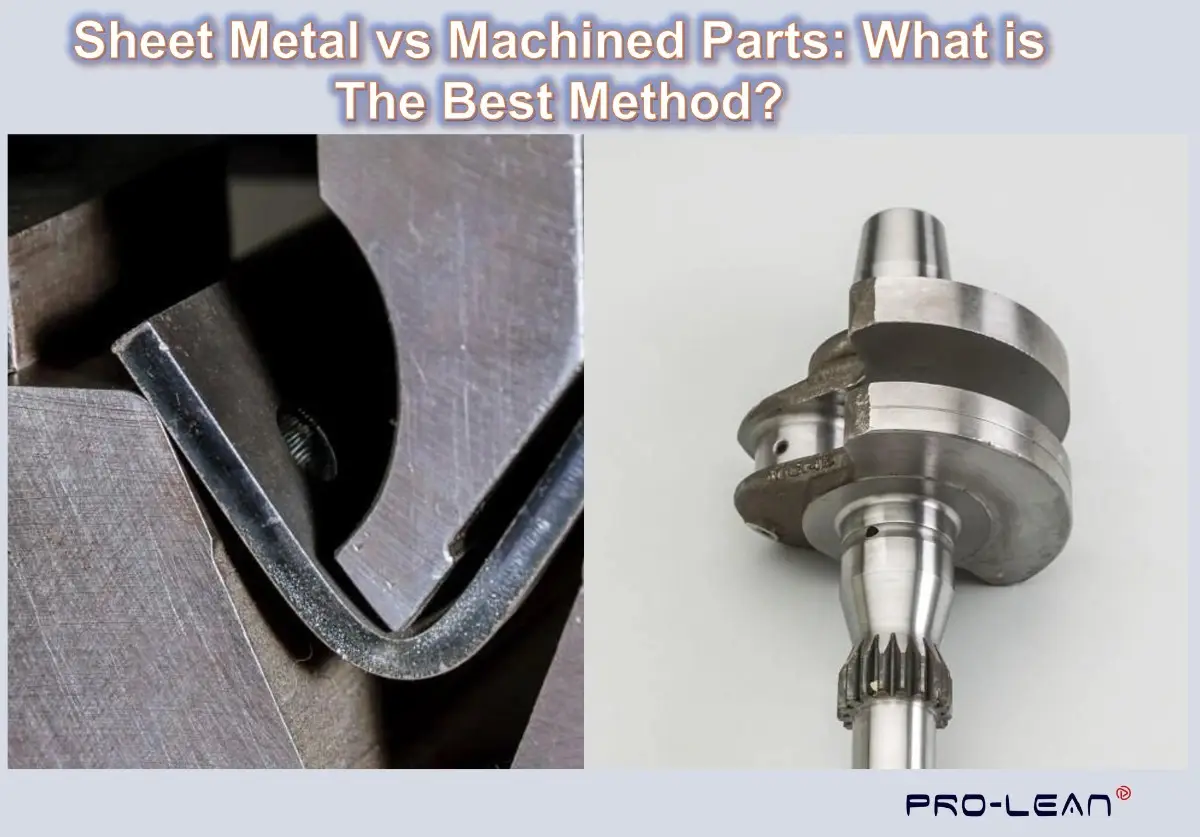
Manufacturing metal is often a complicated and lengthy process comprising several steps. Some parts undergo sheet metal fabrication, others CNC machining services. The goal is generally similar; to make the material more usable.
The challenge is many users are confused about sheet metal vs machined parts. What is the difference? Does it matter which manufacturing technology is used? The operation, material involved, and the result from these processes can be diverse. Depending on the project, the processes have advantages and disadvantages.
Sheet metal fabrication produces brackets, hinges, and such parts, while metal CNC machining is renowned for the manufacture of gears, car valves, and so forth. The operations under sheet metal processes include laser cutting, bending, and joining, while machined parts are created using CNC turning, CNC milling, and related operations.
So, it pays to differentiate between these metal manufacturing processes, whether you are in aerospace, healthcare, general manufacturing, or the automotive industry.
This article goes deep into the different aspects of the technologies to bring out the differences and similarities.
What is Sheet Metal Fabrication?
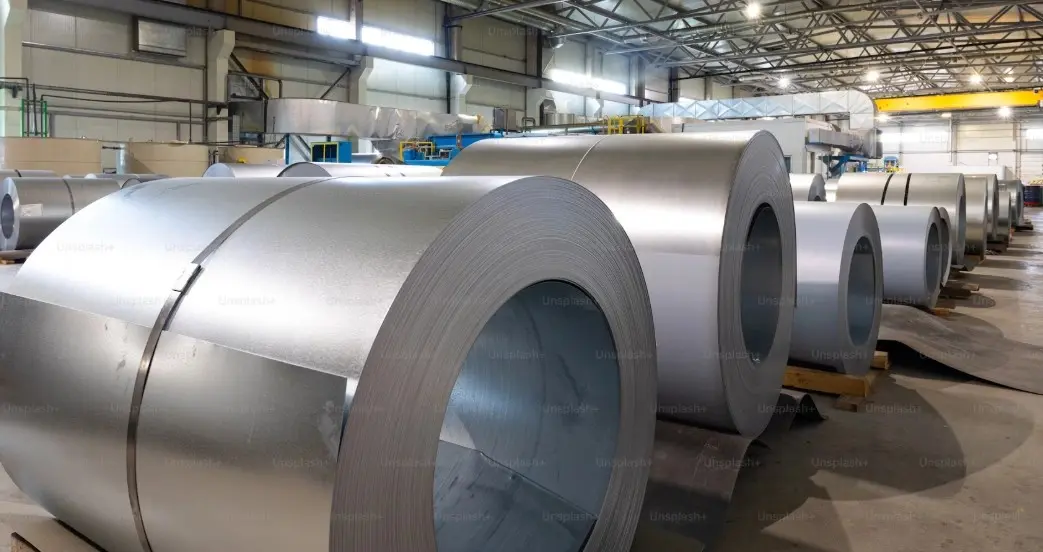
Sheet metal
Sheet metal fabrication is a manufacturing process for thin sheets of metal thicknesses between 0.5 and 10mm. The force for these processes is relatively minimal. Therefore, the processes are usually done at normal temperatures.
Popular products from sheet metal fabrication are hinges, flanges, and base plates. The parts may appear simple, but expert design and manufacturing are involved. The best sheet metal fabrication service providers can produce such parts quickly and cost-effectively.
Computer control can be integrated with sheet metal fabrication for precision and faster results. The CNC technology controls various metal fabrication processes, giving rise to terminologies such as CNC metal forming and CNC tube bending.
Try Prolean Now!
Different Sheet Metal Operations
In line with ISO 9001:2015 certification, Prolean Tech offers unmatched sheet metal fabrication capabilities, handling metals such as aluminum, steel, stainless steel, and more. The processes detailed here – cutting, forming, joining, and finishing – are all our specialty.
Our lead times are as short as one day, and a real engineer can provide a quote within an hour in readiness for custom sheet metal fabrication.
Sheet metal fabrication involves several exciting operations that transform designs into products. The accuracy and versatility of the following sheet metal operations suit many industrial part requirements.
Below are more details about the operations:
Cutting
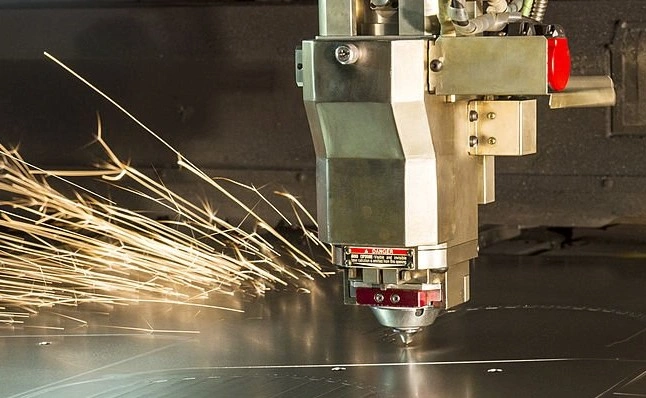
Laser cutting metal
Sheet metal cutting is the precise separation of a part of a sheet metal from stock to create a predetermined part or component. The required accuracy is achieved through the use of different technologies and methods.
Popular sheet metal cutting technologies are plasma, waterjet, and laser cutting. Shearing is a more conventional method of cutting metal, but it is still applicable today. Other sheet metal cutting operations are punching, deburring, and blanking.
While the goal of these cutting methods is the same, the cutting specifics for a project may differ. The considerations when determining which technique to use include cutting speed, cut quality, material type, and sheet thickness.
Forming
The most popular sheet metal forming process is probably sheet metal bending, which means changing the geometry of the material through the application of force. The force, which is more than the yield strength of the material, forces deformation but does not break or cut the material.
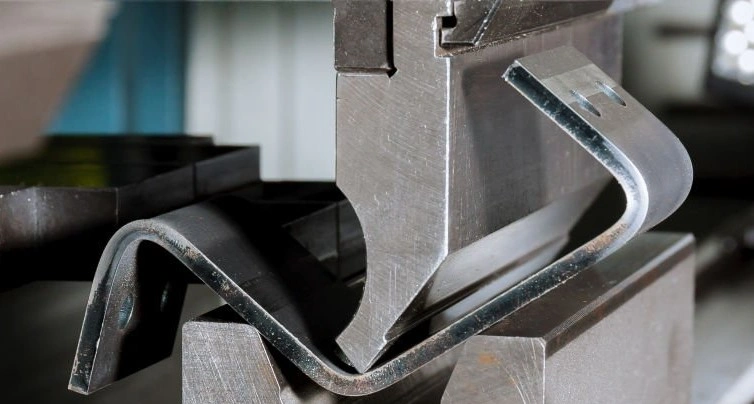
Bending sheet metal
Again, this looks like a simple process, but the number of approaches used suggests otherwise. Sheet metal bending methods include rotary draw bending, V-bending, roll bending, and air bending. Others are bottom bending and wipe bending.
Other examples of sheet metal forming processes are roll straightening, deep drawing, stretch forming, incremental forming, and hybrid forming.
You can use CNC metal forming for higher efficiency, accuracy, and production of complex shapes.
Joining
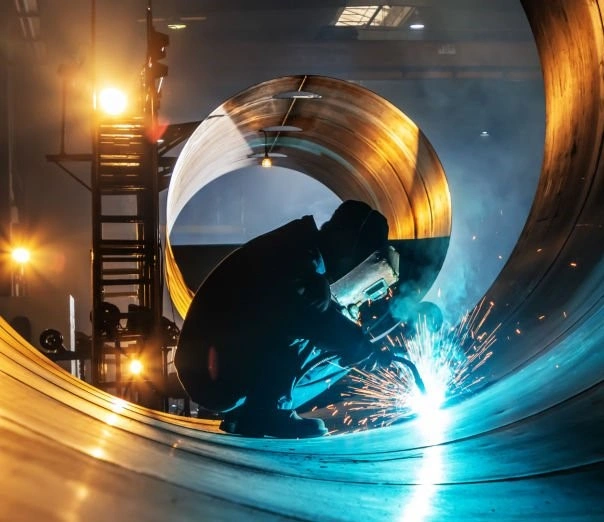
Creating a welding joint
Joining in sheet metal fabrication refers to attaching two or more pieces of sheet metal to produce an object. Several techniques fall under this category, including welding, soldering, brazing, adhesive bonding, and bolting.
Note that sheet metal joining methods can be either detachable or non-detachable. Each has benefits and drawbacks, so taking some time to analyze its suitability is paramount.
Finishing
The sheet metal manufacturer often subjects the product to finishing operations to complete the metal fabrication process. There are many approaches, but the most common include anodizing, galvanizing, passivation, and electroplating.
Other options in sheet metal finishing are powder coating, electropolishing, tumbling, and bead blasting.
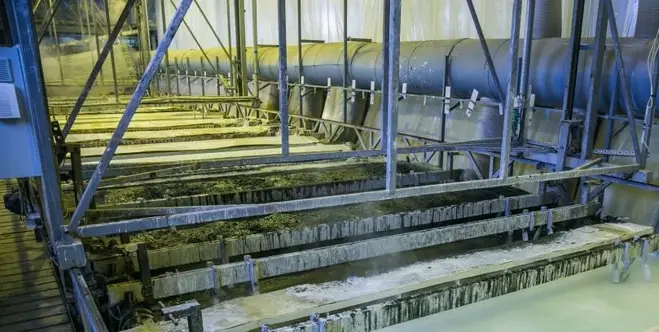
A galvanizing plant
Benefits of Sheet Metal Fabrication
- With the right equipment, this method produces
- Easy to modify the parts
- Easy to manufacture, store, and transport
- Cost-effective production
- Sheet metal products are often sturdy, durable, corrosion-resistant, and wear-resistant
What is Machining for Metals?
Machining for metals is where human and machine precision meets raw materials – metals. It is the matter removal process from a metal stock to generate an instrument, item, or part.
Machines such as CNC lathes, drill presses, and mills are popular in these processes.
Prolean Tech has extensive experience and machining capabilities covering 100+ material options. Our custom CNC machining service offers quick prototypes to full-scale production tailored to your needs.
We can machine custom parts within one day and are ready to support the machining processes described below.
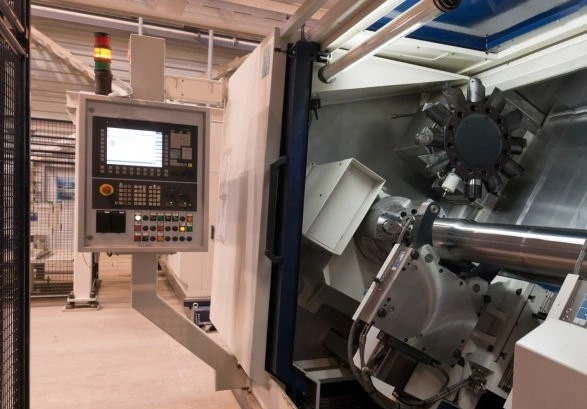
An industrial CNC lathe
Manufacturing metal is possible using two main techniques: Additive and subtractive. Subtractive manufacturing is characterized by material removal from a parent piece of metal. Its opposite, additive manufacturing, is much newer and usually synonymous with 3D printing.
CNC machining metal is a subtractive manufacturing process. Based on the specific machining operation, the following machining tools feature:
- Turning tools
- Drilling tools
- Cutting tools
- Milling tools
- Grinding tools
Professional machinists produce simple and complicated metal machined parts and components using various techniques and machines. Users need to know how to Unlock Market Success with Multi-Axis CNC Machining to capitalize on these tools and the applicable machines.
Try Prolean Now!
A Look at Machined Metal Operations
Prolean Tech is capable of producing precise and complex machined parts using CNC milling, turning, drilling, and many other processes. We use so many machining metal operations that any project requirements you think of are covered. Our tolerances are as good as ±0.0002″ (0.005mm).
The easiest way to categorize these machined metal operations is as conventional and non-conventional types. With conventional techniques, the processes involve hand tools drilling bits, cutting blades, and other tangible cutting items. Turning, milling, and sawing belong to this group.
Non-conventional machining techniques are the more recent approaches that diverge from the use of mechanical forces to machine metal. Instead, these machining methods apply electrical, chemical, and related mechanisms to erode metal.
Examples that fit this description are abrasive jet machining, electrical discharge machining (EDM), and laser beam machining (LBM).
Here are more details about some of these metal machining operations:
Drilling
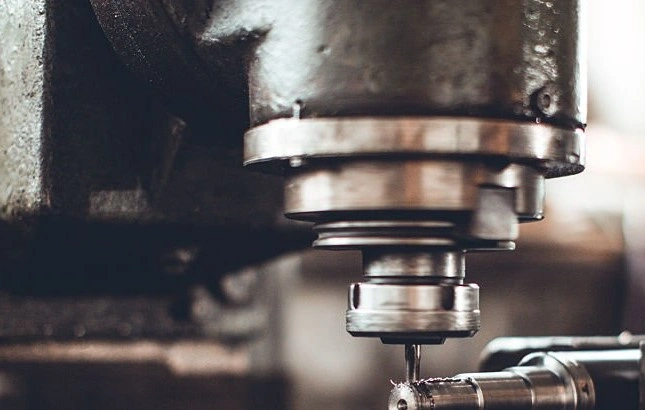
CNC drilling
The machinist uses a drill bit to generate a cylindrical hole in metal. The process involves bringing the tip of a rotating drill bit toward the metal surface. Drilling can form through holes or blind holes depending on the depth of drilling and thickness of the material.
If you want to achieve precise hole size and quality, you can use CNC drilling. Popular drilling machines include CNC drilling machines, gang drilling machines, sensitive drilling machines, and micro drill presses.
Turning
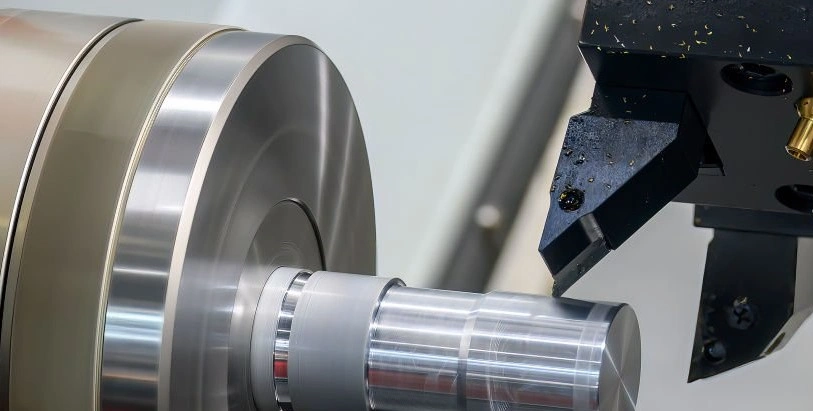
Turning metal entails holding the workpiece firmly in a chuck, which in turn is held by the lathe’s spindle. The machine spindle rotates at a specified speed as a cutting tool approaches it either laterally or longitudinally. Metals such as aluminum, steel, nickel, and brass are often processed through turning operations.
Milling
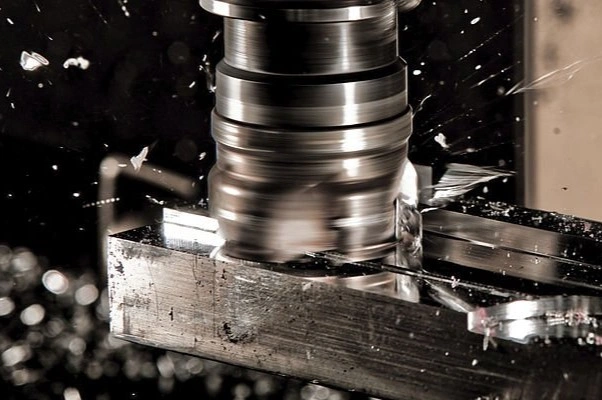
CNC Milling
For the milling operation, the workpiece is stationary and the tool does the rotating. It takes place on a milling machine, which comprises the cutter, jig, workpiece, and the workpiece holding mechanism.
Advanced metal milling is done via a CNC milling machine. CNC milling is effective in producing precise machined parts used in a wide range of industries.
CNC machining metal parts from milling operation can be produced through versions of the process including:
- Thread milling
- Face milling
- Chamfer milling
- Slot milling
- End milling
Boring
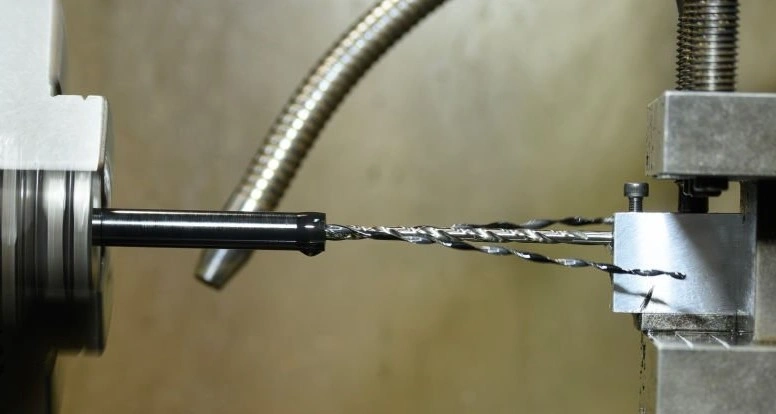
CNC boring
You use this machining technique when you want to enlarge an existing hole in a metal piece. Boring is also effective in improving the surface finish of a hole. The method uses a single-point tool that can achieve high positional accuracy.
Reaming
Reaming is another metal machining method aimed at improving the accuracy and surface finish. It entails a tool called a reamer rotating within the hole as it removes material in small chunks. Machinists use a variety of reaming tools including shell reamer and hand reamer.
Electrical Discharge Machining (EDM)
As an unconventional metal machining process, EDM replaces the traditional mechanical machining force with thermal energy. The process is based on the melting property of materials. This setup generates thermal energy and directs it to the point on the workpiece that requires machining.
This method only applies to conductive materials and is highly accurate. It is often a preferable machining option for parts with sharp internal edges and deep cavities.
The main categories of EDM are hole-drilling EDM, die-sinking EDM, and wire EDM.
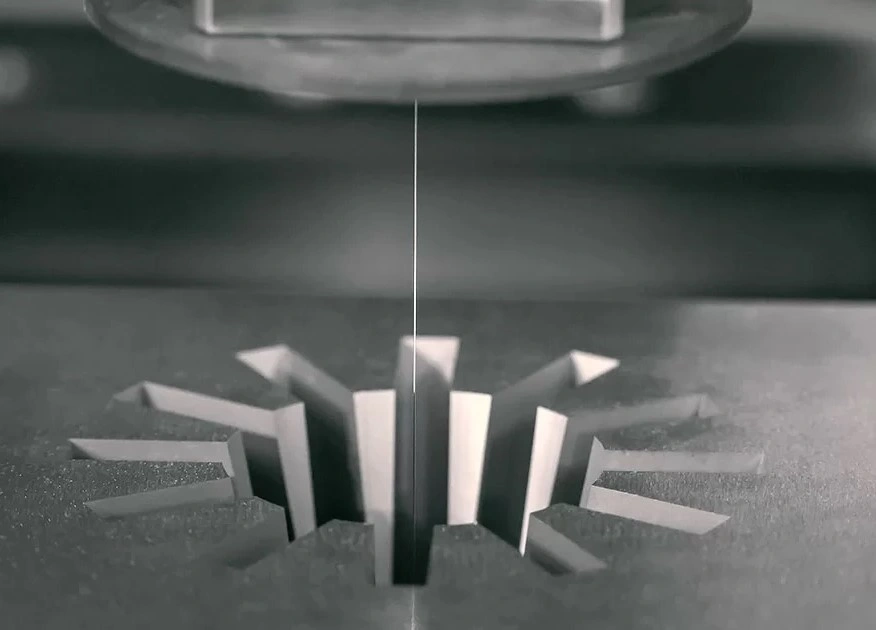
Wire EDM
Benefits of Machining for Metals
- High accuracy and precision
- Can produce machines parts with complex geometries and shapes
- Accommodates a wide range of metals and other materials
- Perfect for medium to low-volume manufacture of machined parts
To capitalize on the capabilities of CNC machining for parts, get your quote now.
What is the Difference between Sheet Metal and Machined Parts?
Sheet metal fabrication and machining metal parts have fundamental differences in processes used, materials involved, products, and so on. The following comparison table brings out the differences in a summarized form.
| Sheet metal | Machined parts |
| Mostly for sheet metal | Applicable for a wide range of materials such as metal, plastic, and ceramic. |
| Relatively more time and effort for the multiple processes involved | Time and effort are minimal with metal CNC machining. |
| Available technologies are adequate | It usually requires advanced machinery. |
| Incorporation of manual processes can compromise product accuracy | Highly accurate due to automation. |
| Capable of producing small and large items | Product size limited to available CNC machine sizes. |
| Characterized by forming, shaping, joining, and so on | A subtractive method that involves the removal of material from stock. |
Sheet Metal vs Machined Parts: How to Choose the Best Process
Are you still unsure which option to take between sheet metal vs machined parts? The following considerations can help in the selection process.
Product Geometry and Shape
Often, the geometry and shape of the part will dictate which of the two metal processing technologies is more suitable. CNC machined parts can be complex and intricate to the desired level. Whether you are looking for tubular, cubic, or parametric machine parts, you can achieve that with CNC machining.
Cost of the Process
Regarding the cost of sheet metal vs machined parts manufacture, the comparison is not straightforward because multiple factors are involved. For instance, some CNC machines are worth hundreds of thousands of dollars, yet there are DIY ones at a fraction of the cost.
The same argument applies to sheet metal services. Some parts require just one process while others pass through multiple fabrication processes. The costs can differ significantly.
Production Volume
Sheet metal production is easy to apply in batch production. All that’s required is automation of the process. This approach is common in automotive production. CNC-machined parts are suitable for custom manufacturing or prototypes.
To suit batch production, several CNC machines would have to be engaged. This is because a CNC machine is designed to manufacture one item at a time. The processing time becomes longer for more complex parts.
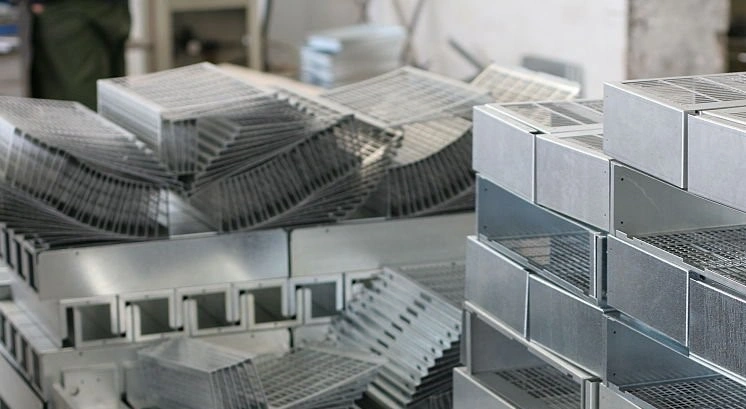
A batch of sheet metal products
Size of the Material
Both CNC machining and sheet metal fabrication can produce large parts. The CNC machining industry has solutions for large-size components. For instance, gantry CNC machines are popular in the rail, aerospace, marine, and nuclear industries.
With fabrication and all its capability to join different pieces, the possible part size is also large.
On a different aspect, the tiny sizes of machine parts are unachievable with sheet metal fabrication. Modern CNC machines can produce parts a few micrometers long.
Level of Detailing on Sheet Metal
It is important to note that sheet metal machining is sometimes necessary to apply specific details on the sheet metal. After the sheet metal has undergone the usual cutting, bending, and other processes, pockets, threads, or any other detail may be required.
A blend of sheet metal machining and CNC machining is common in automotive and aerospace manufacturing. For instance, manufacturers in these industries subject fabricated sheet metal to CNC sheet metal machining for edge beveling.
Try Prolean Now!
In Summary
Both sheet metal and machined parts methods provide unique pros and cons that apply to different scenarios. Sheet metal fabrication is ideal for the cost-effective production of high-volume parts, while metal CNC machining works best for complex and precise parts.
Understanding such disparities can guide manufacturers and part users to align their specific needs with the right metal manufacturing method. Prolean Tech has highly skilled personnel and uses advanced machinery in the provision of the best CNC turning and milling, and sheet metal fabrication services.
Contact us to learn more about our capabilities.
FAQs
What is the difference between CNC machining and sheet metal fabrication?
CNC machining and sheet metal fabrication are different in working principles, areas of application, and types of materials involved, among other areas. For instance, while CNC machining processes include turning and milling, sheet metal fabrication entails techniques such as V-bending and roll bending.
What does it mean for a part to be machined?
Machining a part means cutting or shaping the part using different machines and tools. Popular machining processes for a part are boring, turning, milling, and reaming.
What are the types of sheet metal?
Sheet metal can be categorized in terms of the material used to manufacture the sheet metal. This gives types such as aluminum sheet metal, galvanized steel, cold rolled steel, and stainless steel.
What is the difference between sheet metal and mild steel?
The difference between sheet metal and mild steel is that while sheet metal is a type of metal that has been manufactured into flat pieces with small thicknesses, mild steel is a steel type. Sheet metal can be processed from a variety of metals, including mild steel.

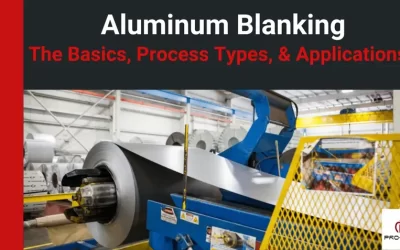
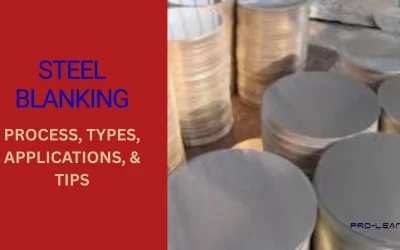
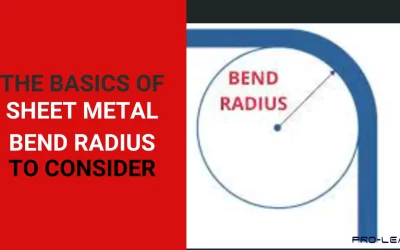
0 Comments